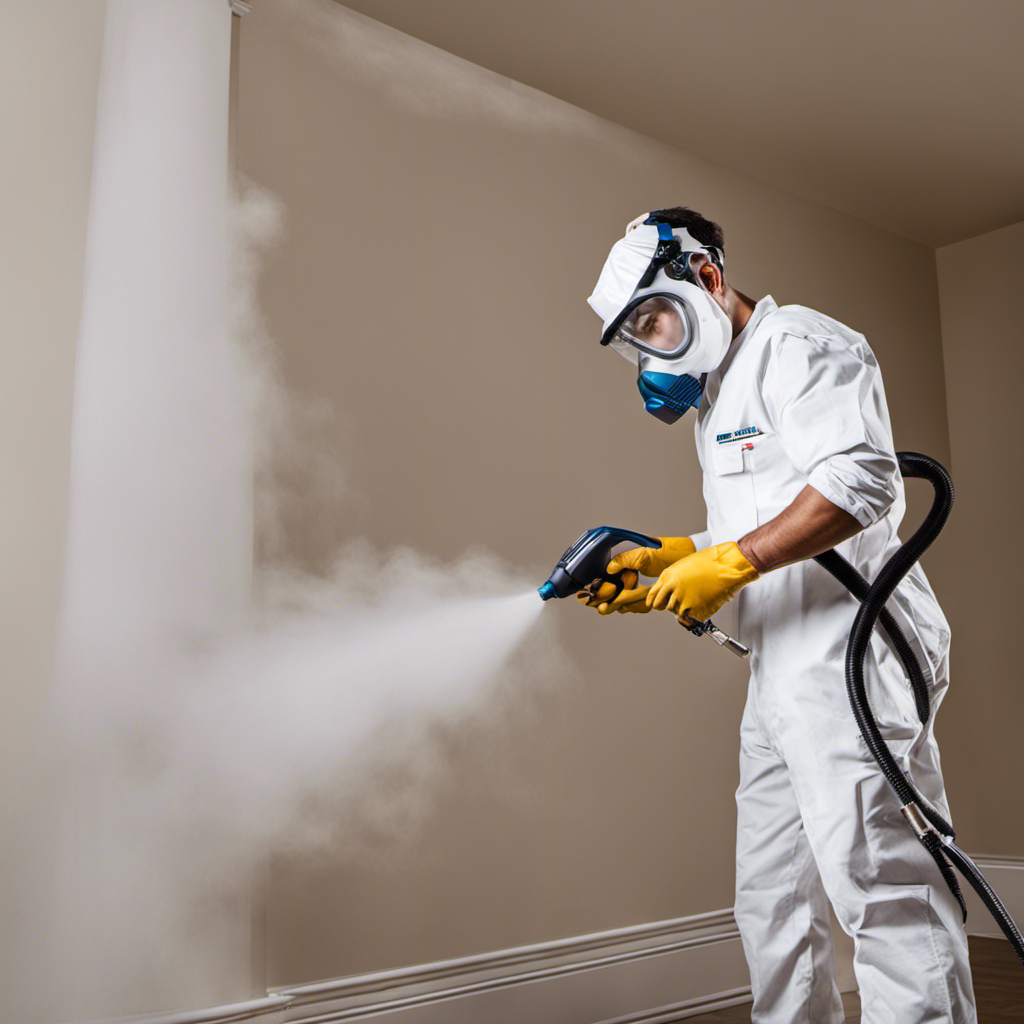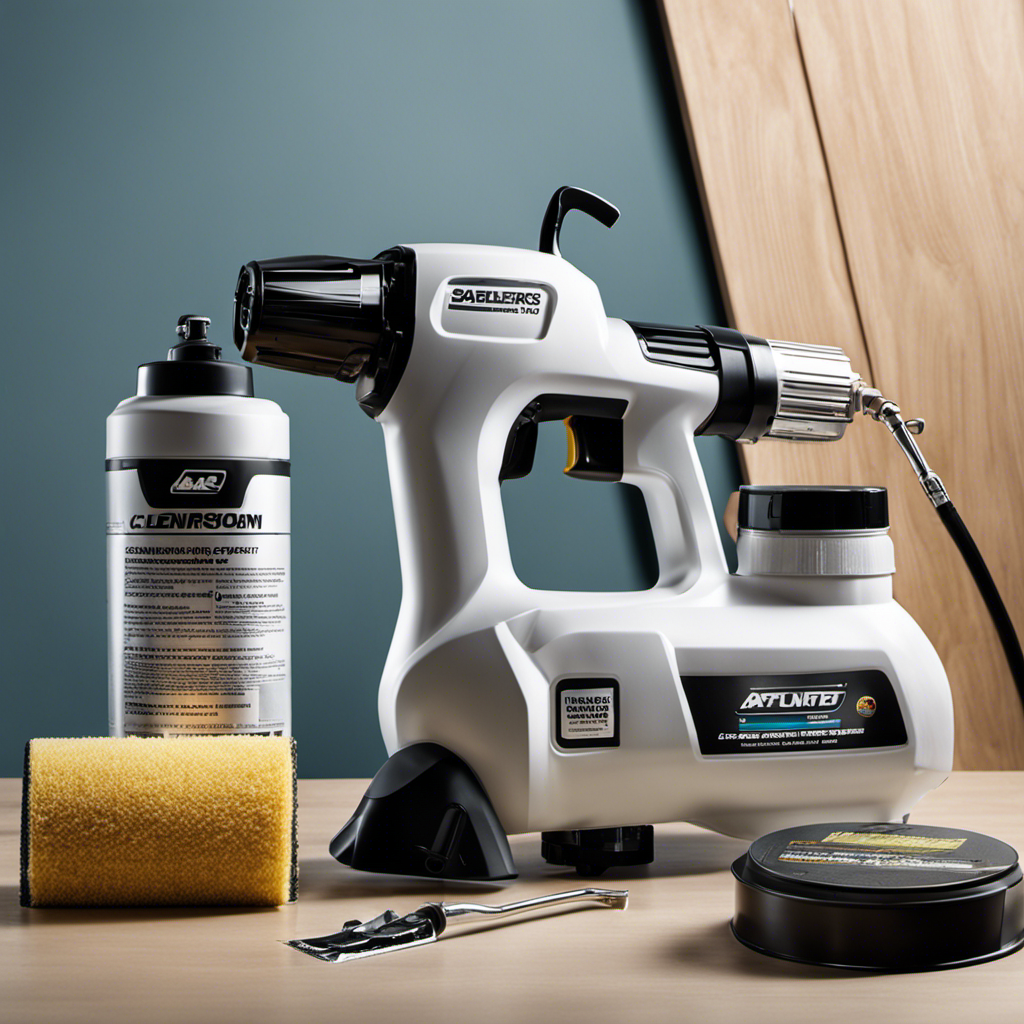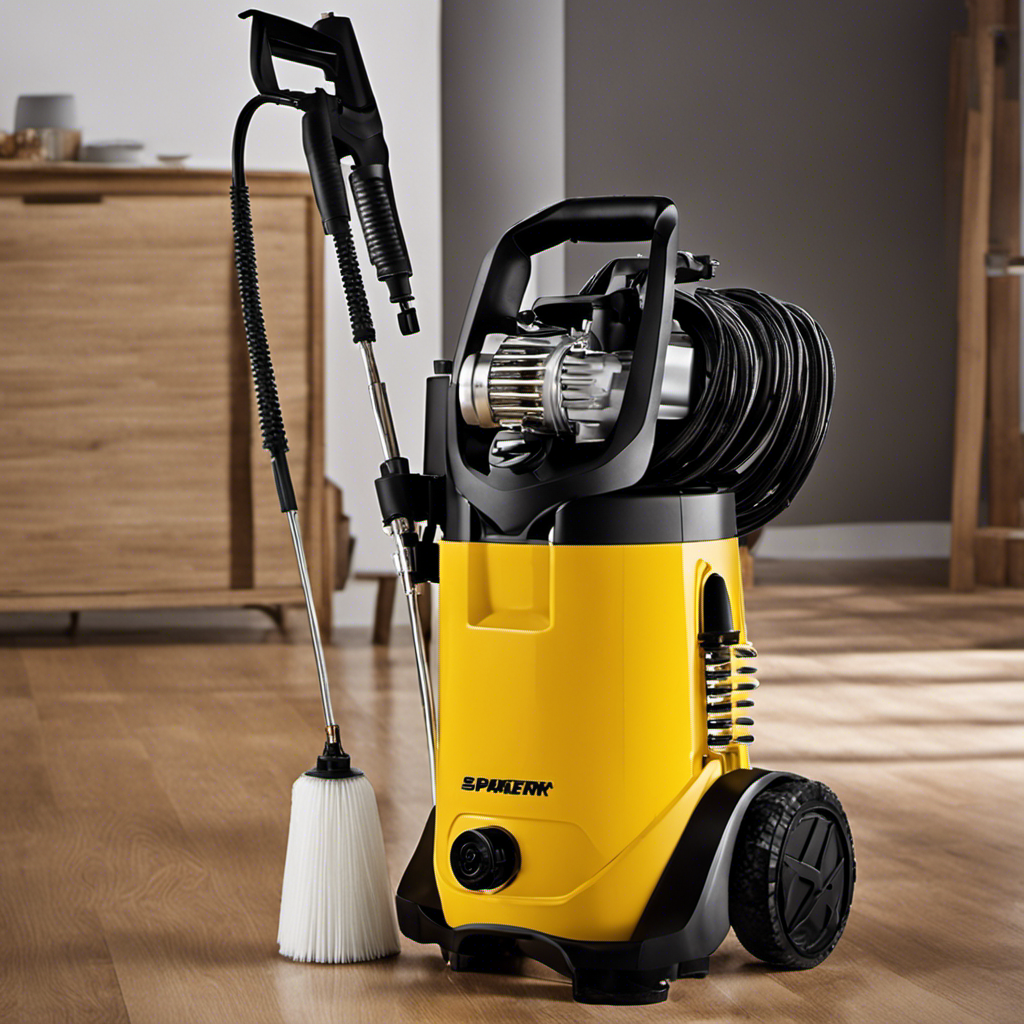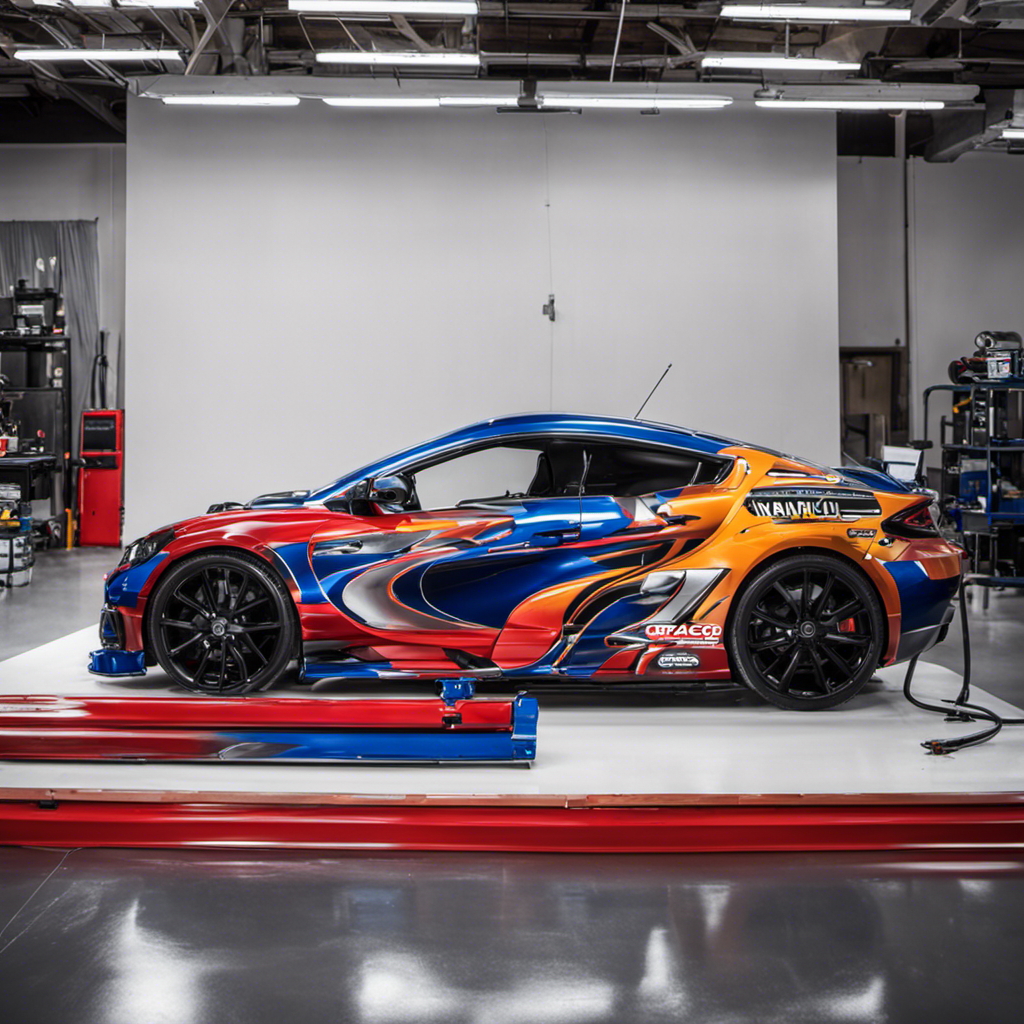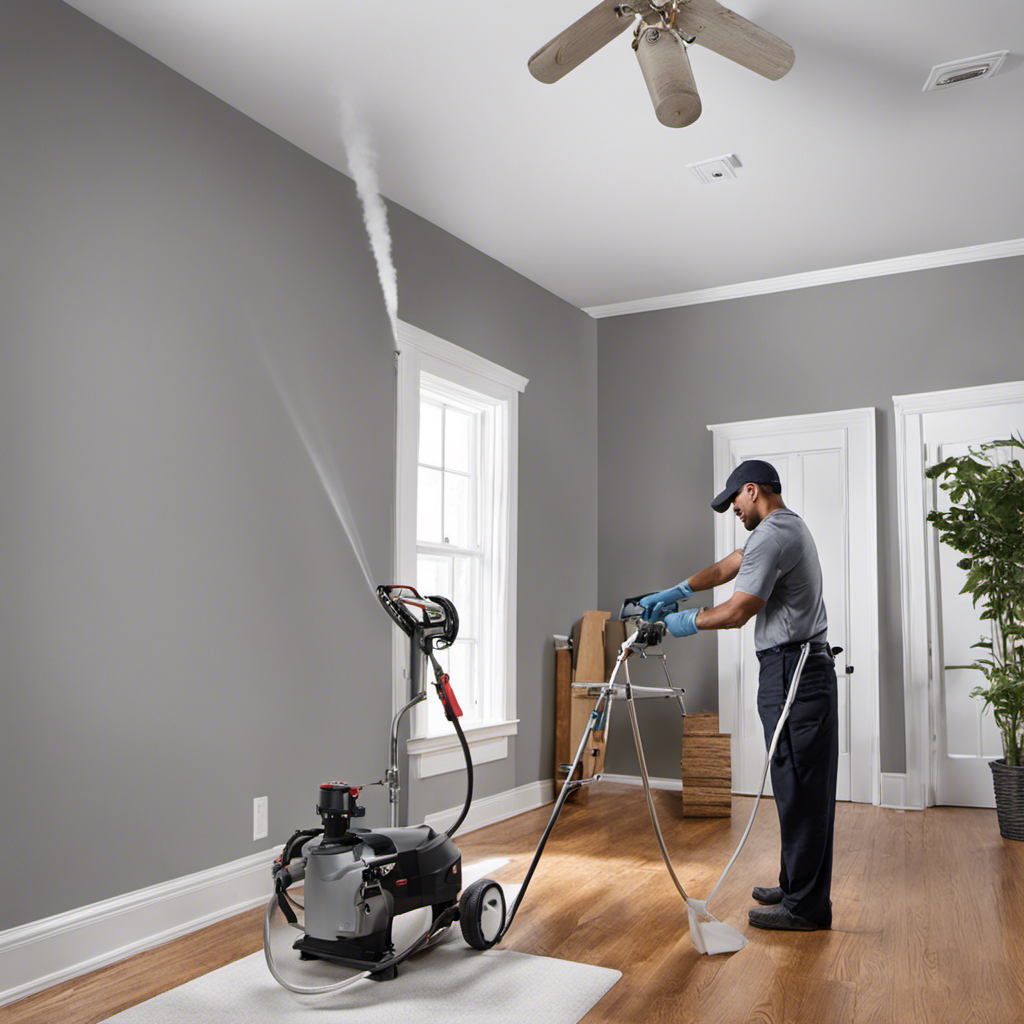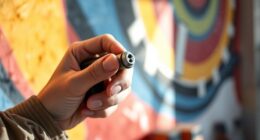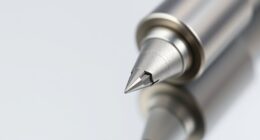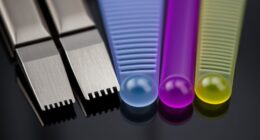Selecting the correct paint for airless sprayers is an important decision. There are various types to choose from, including latex, acrylic, enamel, metallic, and chalk paint, making it challenging to find the ideal option.
But fear not, because this article is here to guide you through the colorful world of airless sprayer paints. So buckle up and get ready to dive into the fascinating realm of paint selection, where every stroke brings you one step closer to a flawless finish.
Key Takeaways
- Latex paint is the most suitable type of paint for airless paint sprayers, as it dries quickly, produces a smooth finish, and is available in various colors and finishes.
- Primer paint should be used before applying the topcoat to create a smooth and uniform base, improve paint adhesion and durability, and prevent stains from bleeding through.
- Oil-based paint is not suitable for airless paint sprayers, but it offers better adhesion, durability, and a smoother finish compared to other types of paint.
- Epoxy paint is an extremely durable and resistant option, ideal for concrete floors and metal surfaces, providing excellent protection against wear and tear and chemical resistance.
Types of Paint Suitable for Airless Sprayers
Latex paint is formulated specifically for airless paint sprayers, offering quick drying time and a smooth finish. It is one of the most popular types of paint used with airless sprayers due to its ease of application and versatility.
One of the pros of using airless paint sprayers is that they can cover large areas quickly and efficiently, saving time and effort. Additionally, airless sprayers can provide a more even and uniform finish compared to traditional methods.
However, there are some cons to consider as well. Airless sprayers tend to produce overspray, which can lead to wastage of paint. They also require proper technique and skill to achieve a professional finish.
To ensure a professional result, it is essential to follow a few tips. First, make sure to properly prepare the surface by cleaning and priming it. Secondly, adjust the nozzle size and pressure according to the type of paint being used. Finally, maintain a consistent speed and distance when spraying to avoid drips or streaks.
Latex Paint for Airless Sprayers
When using an airless paint sprayer, homeowners can rely on latex paint for its quick drying time and ability to produce a smooth finish. Latex paint offers several advantages for airless sprayers.
It is formulated specifically for these sprayers, ensuring optimal performance and coverage. The quick drying time of latex paint allows for faster project completion, saving time and effort. Additionally, latex paint is available in various colors and finishes, providing homeowners with a wide range of options to suit their preferences.
Cleaning airless sprayers after using latex paint is relatively straightforward. Homeowners should flush the sprayer with water or a recommended cleaning solution to remove any residue and prevent clogs. Regular maintenance and proper cleaning will keep the sprayer in good condition for future use.
Acrylic Paint for Airless Sprayers
Homeowners can rely on acrylic paint for airless sprayers due to its water-based formula and quick-drying properties, making it easy to clean up and providing excellent adhesion to various surfaces. Acrylic paint offers several advantages over latex paint when it comes to using airless sprayers. Here are four key points to consider:
-
Superior adhesion: Acrylic paint forms a strong bond with different surfaces, ensuring long-lasting and durable results.
-
Quick drying time: With acrylic paint, you can complete your painting project faster as it dries quickly, allowing for multiple coats in a shorter period.
-
Easy clean-up: Unlike latex paint, acrylic paint can be easily cleaned up with soap and water, saving you time and effort.
-
Versatility: Acrylic paint is available in a wide range of colors and finishes, giving you more options to achieve your desired look.
To ensure the best results when using acrylic paint with airless sprayers, it is recommended to follow these best practices:
- Use a high-quality acrylic paint specifically formulated for airless sprayers.
- Properly prepare the surface by cleaning and priming it before applying the paint.
- Adjust the sprayer settings, such as pressure and nozzle size, to achieve the desired coverage and finish.
- Clean the sprayer thoroughly after each use to prevent clogs and maintain its performance.
Enamel Paint for Airless Sprayers
Enamel paint, known for its smooth and glossy finish, provides homeowners with a durable and vibrant option when using airless paint sprayers. This type of paint is highly durable, making it resistant to chipping and scratching, which is especially important for high-traffic areas.
Enamel paint also offers a wide range of color options, allowing homeowners to choose from a variety of vibrant shades to suit their preferences and décor. Whether it’s for painting walls, furniture, or accessories, enamel paint delivers a professional and flawless look.
Additionally, the coverage provided by enamel paint is superior, requiring fewer coats for a solid finish. With its durability and extensive color choices, enamel paint is a popular choice for homeowners looking for a long-lasting and visually appealing paint option for their airless paint sprayers.
Metallic Paint for Airless Sprayers
Metallic paint, known for adding glamour and shine, provides a unique aesthetic option for homeowners using airless paint sprayers. With its reflective properties, metallic paint creates a stunning finish that can elevate any space.
Here are the advantages of using metallic paint in airless sprayers and techniques for achieving a flawless metallic finish:
-
Enhanced visual appeal: Metallic paint adds depth and dimension to surfaces, making them stand out and catch the light in a captivating way.
-
Versatility: Metallic paint can be used on accent walls, furniture, and accessories, allowing for endless creative possibilities.
-
Durability: Metallic paint is formulated to be long-lasting and resistant to chipping, ensuring that your paint job remains beautiful for years to come.
-
Easy application: Airless sprayers provide a smooth and even application of metallic paint, minimizing streaks and ensuring a professional-looking finish.
Chalk Paint for Airless Sprayers
Chalk paint, known for creating a smooth matte finish, offers homeowners using airless paint sprayers a versatile option for achieving a distressed vintage look. This type of paint has gained popularity due to its unique characteristics and benefits. One advantage of chalk paint is its ability to adhere well to various surfaces, including wood, metal, and even fabric. It also requires minimal preparation, making it a convenient choice for DIY projects. Additionally, chalk paint can be easily distressed using techniques such as sanding or applying a dark wax, allowing homeowners to achieve a vintage, aged appearance. To achieve the desired distressed look, it is important to apply the paint in thin layers and sand lightly between coats. Using different tools like brushes or rags can also create interesting texture and patterns. With its versatility and ability to create a distressed vintage look, chalk paint is a popular choice for homeowners using airless paint sprayers.
| Advantages of Chalk Paint | Tips for Achieving a Distressed Vintage Look |
|---|---|
| Adheres well to various surfaces | Apply paint in thin layers |
| Minimal preparation required | Sand lightly between coats |
| Easy to distress and age | Use different tools for texture and patterns |
Specialty Paint Applications for Airless Sprayers
After discussing the use of chalk paint with airless sprayers, it is important to explore the various specialty paint applications that can be achieved with these sprayers. Specialty paint techniques allow for unique and creative finishes that can enhance the aesthetic appeal of surfaces.
To ensure a smooth finish with specialty paint, consider the following tips:
-
Proper surface preparation: Clean and prime the surface before applying specialty paint to ensure proper adhesion and a smooth result.
-
Use the correct nozzle size: Adjust the nozzle size based on the type of specialty paint being used. This will help achieve the desired texture and prevent streaking.
-
Apply thin coats: Specialty paint often requires multiple thin coats for the best results. Avoid applying too much paint at once, as this can lead to uneven coverage and drips.
-
Clean the sprayer thoroughly: After using specialty paint, make sure to clean the airless sprayer properly to avoid any residue or clogs that can affect future applications.
Metallic and Textured Finishes With Airless Sprayers
To achieve unique and creative finishes, individuals can explore the application of metallic and textured paint with airless sprayers. These specialty paint options allow for the addition of depth and visual interest to surfaces such as walls, furniture, and accessories.
When applying metallic and textured finishes with an airless sprayer, it is important to use proper application techniques to ensure even coats and prevent streaking. Adjusting the nozzle size is crucial for achieving the desired texture.
Additionally, it is essential to clean the sprayer thoroughly after using specialty paint to avoid residue or clogs. Troubleshooting tips include checking for proper paint consistency, maintaining the recommended spraying distance, and practicing on a test surface beforehand.
Benefits of Primer Paint for Airless Sprayers
Primer paint creates a smooth and uniform base, improving adhesion and durability of the paint job when using airless sprayers. Here are 4 key benefits of using primer paint and techniques for achieving a flawless finish:
-
Enhanced Adhesion: Primer paint creates a strong bond between the surface and the topcoat, ensuring better adhesion and reducing the chances of peeling or flaking.
-
Improved Durability: By providing an extra layer of protection, primer paint increases the longevity of the paint job, making it more resistant to wear and tear.
-
Stain Blocking: Primer paint helps block stains from bleeding through the topcoat, preventing unsightly discoloration and ensuring a clean and professional finish.
-
Smooth and Even Coverage: Applying primer paint evens out the surface texture, minimizing the appearance of imperfections and reducing the likelihood of streaks or uneven coverage.
Oil-Based Paint Considerations With Airless Sprayers
Oil-based paint is not suitable for airless paint sprayers, but it offers better adhesion, durability, and a smoother finish.
When it comes to airless sprayers for exterior surfaces, it is important to choose the right type of paint to achieve a smooth finish. For exterior projects, it is recommended to use latex or acrylic paint, which are formulated specifically for airless paint sprayers. These paints dry quickly, provide excellent adhesion, and produce a smooth finish.
To ensure a smooth application, it is important to properly prepare the surface by cleaning and priming it. Additionally, adjusting the sprayer’s pressure and nozzle size can help achieve an even and smooth coat. Regular maintenance and cleaning of the sprayer are also crucial to ensure optimal performance.
Epoxy Paint Benefits for Airless Sprayers
Epoxy paint, known for its extreme durability and resistance, is an ideal option for airless sprayers when coating concrete floors and metal surfaces. Here are some important tips to keep in mind when using epoxy paint with airless sprayers:
-
Safety Precautions:
- Wear protective clothing, gloves, and goggles to avoid contact with the paint.
- Ensure proper ventilation in the workspace to avoid inhaling fumes.
- Keep the area well-ventilated during and after application for a safe working environment.
- Dispose of leftover paint and containers according to local regulations.
-
Surface Preparation:
- Clean the surface thoroughly to remove dirt, grease, and other contaminants.
- Repair any cracks or imperfections before applying the epoxy paint.
- Use a primer to enhance adhesion and ensure a smooth finish.
-
Application Tips:
- Follow the manufacturer’s instructions for mixing and applying the epoxy paint.
- Use a high-quality airless sprayer with the appropriate nozzle size for even coverage.
- Apply thin, even coats to avoid drips and runs.
- Allow sufficient drying time between coats for optimal results.
-
Maintenance and Care:
- Clean the sprayer thoroughly after each use to prevent clogs and residue buildup.
- Store the epoxy paint in a cool, dry place to maintain its quality.
- Regularly inspect the painted surface for any signs of wear or damage and make necessary touch-ups as needed.
Important Considerations for Choosing Paint for Airless Sprayers
When selecting paint for use with airless sprayers, it is important to consider factors such as drying time, adhesion, and durability. Choosing the right paint for airless sprayers can greatly impact the success of your painting project.
Factors to consider include the type of paint, such as latex, acrylic, enamel, metallic, or chalk paint. Each type has its own unique properties and finishes. Additionally, specialty paint applications, like metallic and textured finishes, can add depth and aesthetic options to surfaces, but require careful application for even coats.
Primer paint is also beneficial as it creates a smooth base, improves adhesion and durability, and blocks stains. It is worth noting that oil-based paint is not suitable for airless sprayers, while epoxy paint offers exceptional durability and resistance for concrete floors and metal surfaces.
Frequently Asked Questions
Can Oil-Based Paint Be Used With Airless Paint Sprayers?
Oil-based paint is not suitable for airless paint sprayers.
However, using latex paint with airless sprayers is a great choice. Latex paint is formulated specifically for airless sprayers and offers quick drying time, a smooth finish, and a wide range of colors and finishes.
To achieve a smooth finish with airless paint sprayers, it is important to adjust the nozzle size and apply even coats to prevent streaking.
What Are the Benefits of Using Primer Paint With Airless Sprayers?
Using primer paint with airless sprayers has several benefits. It creates a smooth and uniform base, improving paint adhesion and durability.
Primer also blocks stains from bleeding through the topcoat, enhancing the longevity of the paint job.
Additionally, it gives walls a professional and flawless look, reducing the chances of streaks or uneven coverage.
When choosing primer paint for airless sprayers, it’s best to select a type that is specifically formulated for use with these sprayers to ensure optimal results.
Are There Any Specialty Paint Applications That Can Be Used With Airless Sprayers?
Specialty finishes and alternative applications can indeed be achieved using airless paint sprayers. These sprayers can handle metallic and textured finishes, adding unique aesthetic options and depth to surfaces. However, careful application is required to ensure even coats and prevent streaking.
Nozzle size may need to be adjusted for textured finishes. It is also important to properly clean the sprayer after using specialty paint to avoid residue or clogs.
What Are the Considerations When Using Epoxy Paint With Airless Sprayers?
When using epoxy paint with airless sprayers, there are several considerations to keep in mind.
Epoxy paint offers exceptional durability and resistance, making it ideal for concrete floors and metal surfaces. It provides excellent protection against wear and tear, high durability, and chemical resistance.
To achieve a smooth finish with epoxy paint using airless sprayers, it is important to ensure proper ventilation during application for a safe working environment.
Additionally, thorough cleaning of the sprayer after use is necessary to avoid residue or clogs.
Can Metallic and Textured Finishes Be Achieved With Airless Paint Sprayers?
Yes, metallic and textured finishes can be achieved with airless paint sprayers. Airless sprayers are capable of applying different types of paint, including metallic and textured finishes.
Metallic finishes add glamour and shine to surfaces, making them suitable for accent walls, furniture, and accessories.
Textured finishes, on the other hand, add unique aesthetic options and depth to surfaces. However, it’s important to note that careful application is required to ensure even coats and prevent streaking. Adjusting the nozzle size for textured finishes is also recommended.
Conclusion
In conclusion, choosing the right paint for airless sprayers is crucial for achieving a professional and smooth finish. Whether you prefer the quick-drying latex paint, the easy-to-clean acrylic paint, the glossy enamel paint, or the glamorous metallic paint, there is a suitable option for every project.
Additionally, using primer paint before applying the topcoat improves adhesion, durability, and blocks stains. While oil-based paint is not recommended, epoxy paint offers exceptional durability and resistance for concrete floors and metal surfaces.
With the right paint choice, your airless sprayer will help you create stunning and long-lasting results.
Franz came aboard the Paint Sprayer Zone team with a background in both journalism and home renovation. His articulate writing style, combined with a passion for DIY projects, makes him an invaluable asset. Franz has a knack for breaking down technical jargon into easy-to-understand content, ensuring that even the most novice of readers can grasp the complexities of paint sprayers.
